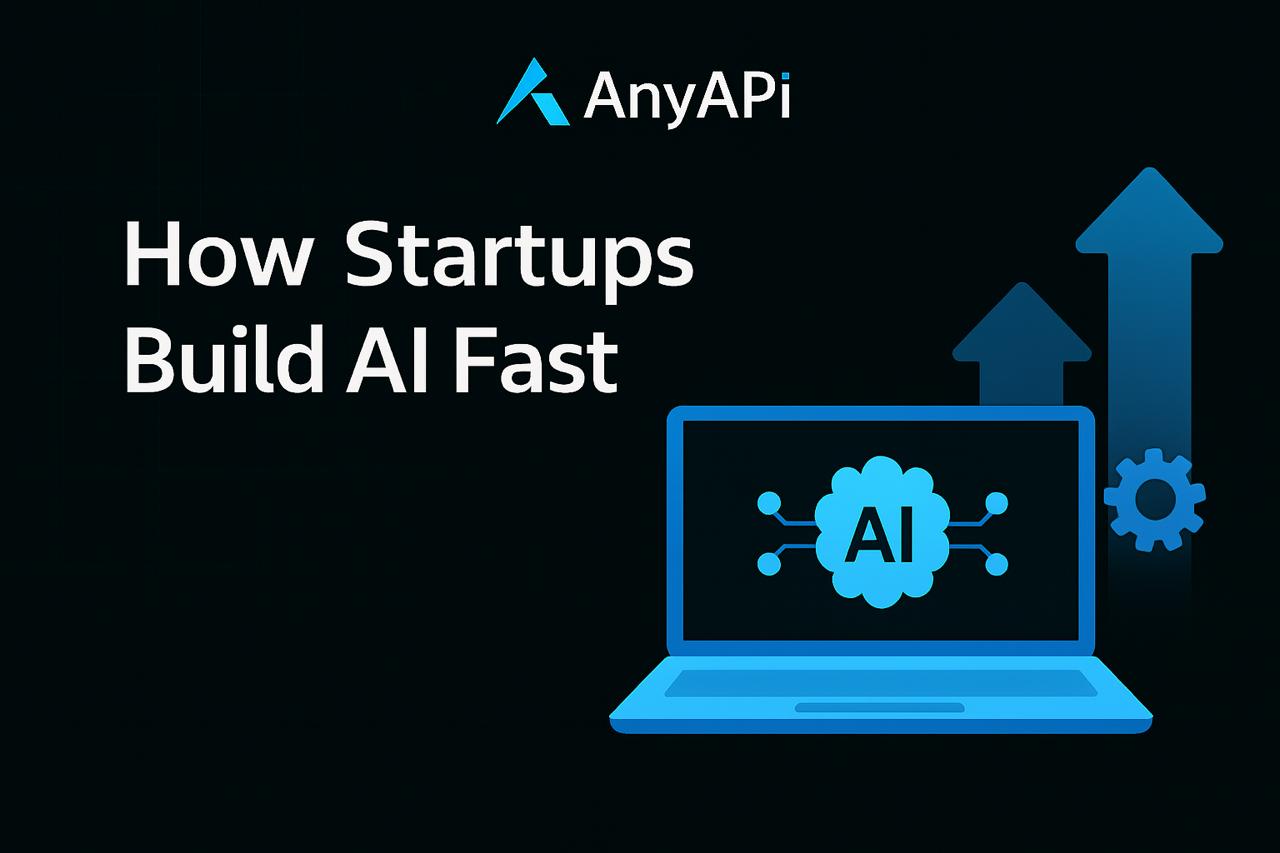Build AI Features Fast: How SaaS Startups Ship With One API

Picture a five‑person SaaS team on a tight launch schedule. They want a smart customer‑support bot, an auto‑summary function for invoices, and a tiny code‑review panel – features users now expect out of the box. The prompts work in playgrounds, but production tells a different story:
- Separate API keys for GPT, Claude, and Mistral
- Different JSON payload shapes
- Surprising rate limits during user spikes
- Region‑based latency swings that ruin “instant” UX
Each fix steals days from roadmap goals. For cash‑conscious startups, every detour hurts runway. The solution most teams gravitate toward? Consolidating behind a single, flexible LLM endpoint.
Why One API Beats Three SDKs Every Time
Fewer Moving Parts in CI/CD
With one request schema, your pipeline’s unit tests, environment variables, and lint rules stay the same – no per‑provider branches.
Straightforward Prompt Reuse
Long‑form customer emails, legal docs, or source‑code prompts can be routed to the right model by swapping a single model value instead of refactoring.
Predictable Spend
Centralized dashboards expose token usage across all workloads. CFOs appreciate clear cost lines; engineers appreciate no end‑of‑month surprises.
Must‑Have Capabilities for Startups Shipping Fast
Technical Insights Without the Jargon
- Streaming vs. Non‑Streaming: For chat UI, token streaming keeps perceived latency low. For nightly batch summarization, non‑streaming bulk endpoints cut overhead.
- Context Windows: Claude 4 Sonnet’s 200 k tokens handle entire knowledge bases. GPT‑4 Turbo’s 128 k tokens cost less for day‑to‑day chat.
- Fallback Logic: Implement exponential backoff paired with a secondary model list to maintain uptime during vendor outages.
These patterns let small teams punch above their weight without over‑engineering.
How Real Startups Execute
Customer Success Chatbot in 72 Hours
A seed‑stage HR SaaS needed multilingual chat help for early customers. They started coding with GPT‑4 Turbo for rapid prototyping, then flipped to Claude Sonnet for lower latency in EU regions. Swap was a one‑line model change; CI stayed green.
Automated Invoice Summaries at Scale
A Series‑A fintech compresses PDF invoices into ledger entries. They batch‑process 15,000 documents nightly using a low‑cost, high‑throughput model like Mistral 7B. When accuracy flags exceed a threshold, the same payload is re‑sent to GPT‑4 Turbo for higher precision – no manual review needed.
In‑App Code Reviews for B2B Platform
A B2B dev‑tool startup offers inline pull‑request feedback. They stream comments from a single endpoint that smart‑routes to a code‑optimised model. Developers see suggestions in under 900 ms, keeping PR cycles tight.
Implementation Blueprint: Going Live in One Sprint
- Define the use‑case boundaries: Chat, batch, or code assist - each has unique latency and cost targets.
- Map models to tasks: Lightweight for classification, premium for reasoning.
- Abstract the model flag: Store active model ID in environment config, not hard‑coded.
- Add spend limits: Set budget caps by environment (dev, staging, prod).
- Instrument logs: Capture prompt, tokens, latency, and cost per request for rapid tuning.
Follow this five‑step checklist and most teams reach production readiness without complex infra tickets.
One Key, Endless Possibilities
A single, unified LLM API removes integration friction, exposes rich model choice, and delivers the agility SaaS startups need to iterate fast. Teams that consolidate gain clearer cost optics, cleaner codebases, and the freedom to pivot models as products evolve.
AnyAPI embodies these principles – offering hundreds of leading models behind one stable endpoint, with built‑in routing, budget controls, and multi‑region performance. Startups use it to ship AI features in days, not months, and to stay lean while scaling.
FAQ
How do I handle vendor outages?
Implement retry logic with a different model ID. A unified API should surface error codes consistently so your fallback stays manageable.
Does switching models require new SDKs?
If the API is OpenAI‑compatible, swapping models is as simple as changing the "model" field; your client library and message schema remain unchanged.
What’s the best way to control cost in production?
Use per‑key budgets with soft alerts. Route high‑volume, low‑risk prompts to economical models and reserve premium models for complex queries.
Can we deploy in multiple regions without new keys?
A good LLM gateway lets you set target regions in headers or environment variables. Requests automatically route to the nearest edge POP.
How do we monitor quality across models?
Log output length, token counts, latency, and end‑user ratings. Compare these metrics per model to build a data‑driven routing strategy.





